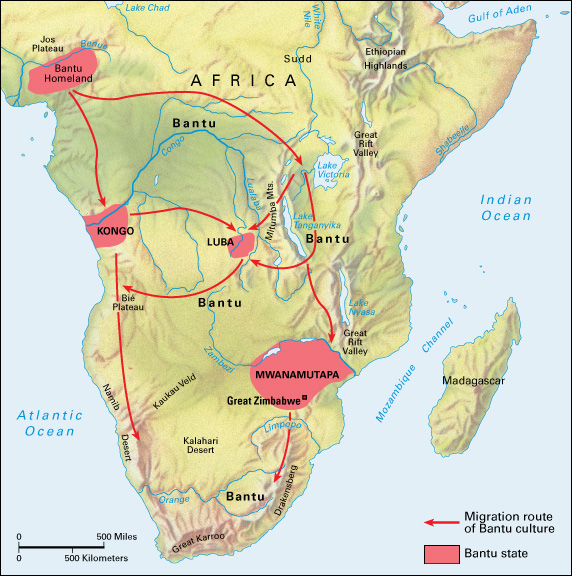Bantu, << BAN too, >> are a large group of African peoples. The word Bantu also refers to the related languages spoken by these peoples.
About 250 million Africans speak Bantu languages. These people make up a major part of the population of nearly all African countries south of 5° north latitude. They belong to more than 300 groups, each with its own language or dialect. Every Bantu group considers itself a separate cultural and political unit, and each has its own name and history. Groups vary in size from a few hundred members to several million. The best-known ones include the Zulu, once feared as warriors in South Africa; the Swahili, whose language is spoken throughout eastern Africa; and the Kikuyu, the largest group in Kenya. See Kikuyu; Swahili; Zulu.
The first Bantu probably lived in what is now Cameroon. But sometime before A.D. 300, the Bantu began one of the greatest migrations in history. Their growing population caused them to move to new lands. These people were farmers who knew how to make iron tools and weapons. They brought the knowledge of ironworking to much of Africa. The migration occurred gradually, with small groups continually splitting off and moving to new regions. These groups slowly developed into the cultural units of today.

By 1500, Bantu peoples had moved into most of central, eastern, and southern Africa. Such groups as the Ganda, Kongo, Luba, Lunda, Nyoro, and Rwanda established great kingdoms in central Africa. Their power was greatly reduced under colonial rule.
The government of South Africa formerly used the term Bantu to refer to that country’s black population. But black South Africans considered the term offensive and preferred to be called blacks. In 1978, the government dropped Bantu from official use.
See also Bemba.
